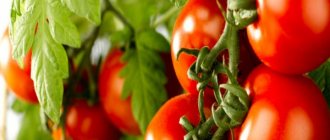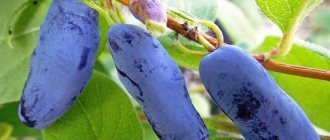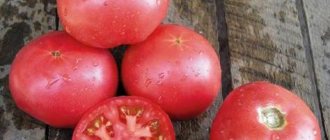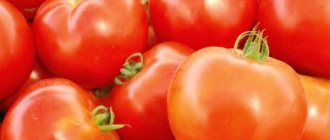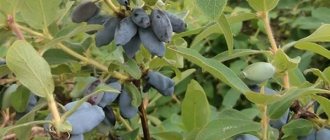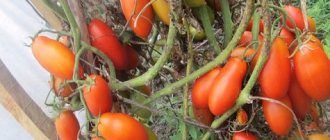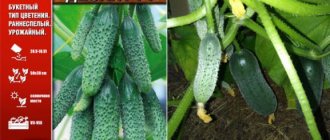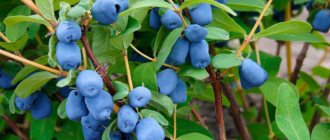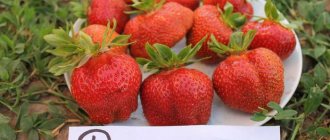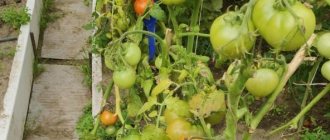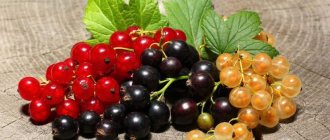A vegetable garden is a place not only for physical work, but also for mental rest and relaxation. Planting something with your own hands, caring for it and watching the growth process - what could be more interesting and enjoyable?
More recently, many gardeners in our country were amazed by the fact that on their own plots it is possible to grow crops that were previously considered wild, that is, growing in forests, fields and meadows.
One of these crops that has won the recognition and love of Russian gardeners is honeysuckle, a resident of impenetrable forest thickets.
This culture has many varieties, both edible and decorative. One of these varieties will be discussed in our article. So, meet honeysuckle Kamchadalka. Description of the variety, reviews and growing tips are given in our article.
Breeding history
To develop a new species or subspecies of a crop, it is necessary to spend a lot of time and effort researching and studying this issue. Therefore, creating varieties is a long and painstaking process, but very exciting and interesting.
Honeysuckle variety Kamchadalka belongs to the authorship of two experienced scientist-breeders A. T. Tkacheva and I. K. Gidzyuk. The experiments of gardeners began many years ago. In 1984, the newly created variety was submitted for state testing, and nine years later it was widely distributed throughout all regions of the Russian Federation.
The selection of the variety took place at the stronghold of northern gardening in Bakcharsky, with the support of the Scientific Research Institute of Horticulture of Siberia. Honeysuckle Kamchadalka was bred from honeysuckle Kamchatka, through free pollination of this species of selected form.
Let's pay attention to some features of the presented variety.
Benefits of use in gardening
Honeysuckle Kamchadalka (a description of the variety will be given below) has great advantages for its use in suburban areas. First of all this:
— Abundant harvest of delicious aromatic berries.
— A product rich in vitamins and other useful substances.
— Effective decoration of the backyard landscape.
If you are interested in the design of a roadside area in front of your house or cottage, then the following photos are just for you.
As you can see, in order for honeysuckle to fit harmoniously and effectively into the home interior, you should arrange the hedge in accordance with your wishes, while not forgetting to carefully and scrupulously care for the plants.
Pest and disease control
The drought-resistant and highly winter-hardy honeysuckle variety Kamchadalka is rarely affected by diseases and pests. Among the pests, the honeysuckle fly and some types of aphids pose a danger to it.
Dark spots found on honeysuckle leaf blades indicate a fungal infection. In this case, the shrub must be sprayed with a fungicide solution. White bloom or shiny cobwebs on the back of the leaves indicate that the plant has been damaged by insect pests. In this case, all parts of the bush must be treated with an insecticide.
Birds really like honeysuckle berries. To protect against them, it is recommended to cover the bushes with a thin net.
Kamchadalka, honeysuckle. Description of the bush
This type of suburban flora grows mainly in the form of compact shrubs with a dense, narrow crown.
Honeysuckle Kamchadalka, a description of the appearance of which should interest many gardeners, has thick branches, knotty and straight, and dull green leaves. They are oval in shape and have elongated edges.
How tall is Kamchadalka honeysuckle? The description of the variety, of course, would be incomplete without mentioning this value. The height of the bushes usually reaches one and a half meters, so it is better to plant this type of honeysuckle separately from trees and other bushes.
How not to make a mistake when buying Kamchadalka? It must be remembered that the shoots of this variety are straight, thick and short, light green in color. The buds are large, and the ovaries are bare, small oval in shape.
Care
Care for large honeysuckle is carried out in the form of regular watering, annual fertilizing and pruning of the plant.
The smell of new furniture - expert recommendations on how to get rid of unpleasant smell quickly and effectively (video + 115 photos)
Annual feeding should be done with mineral and biological fertilizers. Mineral components are introduced in the form of liquid solutions. And humus or cow manure is used as biological fertilizers, which is introduced into the soil when loosening the soil.
Watering should be done 3-4 times per season. But when dry periods occur, the number of waterings should be increased to 2-3 times a week. Excess moisture will lead to root rot and fungal diseases. 1 bush requires 10 liters of warm water.
Note! You need to water the bush at the root at the end of the day.
Pruning should be done regularly after 5 years after planting. It is necessary to prune the crown in the fall, after all the leaves have fallen. Trim old, weakened and damaged shoots. You can also remove young branches that stand out from the overall composition.
Reproduction
Honeysuckle can be propagated at home by seeds, layering and cuttings. The most convenient way is to form layering. To do this, you need to select a young and flexible branch and bend it to the ground. Having fixed the layering in this position, it must be sprinkled with soil and left in this state until spring.
In the spring, the rooted cuttings can be safely separated from the bush, dug up and replanted in a permanent place.
Important! Any method of propagation can only be applied to adult bushes, from 2 to 10 years.
You can plant seedlings from honeysuckle seeds in a home pot, but the resulting plant will not have the same varietal qualities as the parent plant. The seeds should be separated from the pulp, placed in a growth stimulator for a couple of hours, and then buried in moist soil to a depth of 2-3 cm.
Before the shoots appear, the containers should be covered with film; after the first shoots appear, the container is opened and the plants are placed on a well-lit windowsill.
Seeds should be planted immediately after the fruits ripen, and for wintering they should be taken outside along with the pot. In early spring, seedlings can be planted in a garden bed, and a year later they can be transplanted to a permanent place.
Propagating plants by cuttings is effective, but labor-intensive.
- Cut several cuttings 10-15 cm long from the plant, then place them in a growth stimulator.
- The next step is to place the branches in wet sand under a jar for 1 month.
- After rooting, preferably in the spring, new plants can be planted in a permanent place.
Plants older than 6 years can be propagated by dividing the bush. To do this, the bush should be dug up and divided into 2 parts. Each half should have its own root system and strong shoots. Ready-made plants can be planted in their places, having previously prepared fertilized planting holes for them.
It is best to plant a dug up adult plant in a new place, since few nutrients remain in the old soil. If this is not possible, fertilize with mineral fertilizers.
Important! Plants should not be propagated during flowering or shoot formation, as this will disrupt their natural biological clock. The best time to plant young plants is early spring or autumn.
Pests and diseases
Pests and diseases practically do not affect the shrub. In some cases, the plant is attacked by honeysuckle or aphids.
With excess moisture, dark spots appear on the plant, which indicate the onset of a fungal infection. When such symptoms appear, fungicidal solutions are used.
If a whitish coating appears on the leaves of honeysuckle, it should be treated with an anti-parasite agent.
In addition to diseases and insects, the plant can be attacked by birds, which are not averse to eating the entire crop. To protect against them, a dome made of fine mesh is installed over the plant.
Honeysuckle is an unpretentious plant, suitable for growing in almost any suburban and personal plot. If you carry out proper care, you can get more than 3 kg of berries from each bush annually.
Description of fruits
How does Kamchadalka honeysuckle bloom? The inflorescences of the shrub consist of two small yellow flowers.
The berries, on the contrary, have a blue-blue color and are quite large in size (length - up to 2.7 cm, diameter - 1 cm). The shape resembles an elongated oval, pointed upward. The weight of each fruit reaches approximately one gram.
Any Kamchadalka berry has a smooth surface and a dense but thin skin covered with a waxy coating.
The fruit pulp is tender and has a fibrous consistency.
What taste will Kamchadalka please its owner with? Honeysuckle has an unusual, pleasant taste. This variety is distinguished by a delicate, sweet and sour aftertaste, as well as a special rich aroma.
The taste properties of this species were tasted by the State Evaluation Service and received a decent mark from 3.8 to 4.6 points, depending on the geographical location of growth.
Berry composition
The chemical composition of each Kamchadalka honeysuckle fruit consists of biologically active substances of P-active action (anthocyanins, cahetins, leukoanthocyanins, in general approximately 200-1800 mg/%), ascorbic acid (60-80 mg/%), vitamin B1 (30-40 mg/%), vitamin B, pectins, a combination of sugars, organic acids, as well as tannins and dyes.
In accordance with such a rich mineral composition, Kamchadalka berries are used for medical purposes for high blood pressure (as a vascular tonic) and for disorders of the gastrointestinal tract (as a diuretic and tonic).
Productivity, collection and storage
Kamchadalka honeysuckle berries reach maturity in mid-June. The bush has an average yield: 1.2-1.8 kilograms of berries per bush. Some specimens of honeysuckle can produce a yield of up to 3.5 kilograms per bush. The berries are stored well.
The fruits of Kamchadalka honeysuckle have a universal purpose. They can be eaten fresh, used for freezing, making juices, compotes, jelly, jam, and wine.
Maturing conditions
Honeysuckle Kamchadalka is considered a frost-resistant and drought-resistant plant, but it does not like sharp contrasts in air temperature and bears fruit well in temperate climatic conditions. Therefore, it is recommended to plant Kamchadalka in open sunny places.
According to the State Register, this variety of honeysuckle is best planted in the West Siberian region (Kemerovo region, Omsk region, Novosibirsk region).
Without damage to the harvest, the plant can withstand forty degrees minus, and when it blooms and ovaries, it can easily tolerate a drop in temperature to minus eight degrees. (These values are indicated in accordance with the Celsius table).
Kamchadalka honeysuckle is immune to various diseases and all kinds of pests, so growing it is very easy and pleasant.
It should also be mentioned that this plant is self-sterile. How then does honeysuckle (Kamchadalka variety) produce? The pollinator (or rather pollinators) of this species is honeysuckle of the varieties Cinderella, Roxana, Iksa, Blue Spindle, Pamyati Gidzyuk and others. Therefore, we advise you to plant these species nearby so that they, pollinating each other, bring a bountiful and tasty harvest.
Agricultural technology
Agricultural technology for growing Kamchadalka usually does not cause difficulties. The variety is unpretentious and does not require any special care. Difficulties in growing may arise only in the southern regions. Due to the peculiarities of the climate (a large number of sunny days, high temperatures), the crop can bloom again. The fruits will have time to ripen before the cold weather sets in, but this has a negative impact on the buds of the next season - they grow weak and often sick.
Another problem with growing crops in the south is winter thaws. Literally within three to five days of warm weather, the buds can wake up, and then the frosts that strike again will simply destroy them. As a result, there is a high chance of being left without a harvest in the summer.
Honeysuckle reacts very quickly to the onset of heat and responds by awakening the buds.
Selection of location and planting material
Despite the fact that the variety tolerates frost well, it reacts less well to seasonal and daily temperature changes. Areas protected from the wind and open to sunlight are ideal for growing Kamchadalka. In this case, groundwater should lie deep enough - no closer than 1.2–1.5 m from the surface.
Since the plant needs protection from the wind and has good decorative qualities, it can be grown along fences, on the south or south-east side of the house or other structures. It is best to purchase planting material from a trusted nursery or from breeders with a good reputation. The most suitable option is one-year-old seedlings.
Important! Highlands with dry soil are not suitable for growing Kamchadalka. Such growing conditions can provoke the growth of side shoots and green mass, and the crop may not bloom at all.
You can recognize them by the following signs:
- the plant should have 2-3 healthy branches, crown height - 35–45 cm;
- branches should be flexible, without signs of disease and dryness, slight peeling of the bark is acceptable;
- there should be live buds on the branches;
- the roots are developed, sufficiently moist, white, with a characteristic earthy smell.
In addition, planting material with a closed root system (in a container) is very good.
Planting and care
In autumn, Kamchadalka is planted at the end of September or in the first ten days of October. The seedlings must take root before the onset of frost. Spring planting is carried out when a stable above-zero temperature has established in your region (including at night). However, the moment for planting should be improved in such a way that the buds do not begin to bloom on the plants.
Honeysuckle. Variety Kamchadalka. Reviews
Recently, the plant has gained universal love among gardeners and gardeners. It is valued for its unpretentiousness and disease resistance, taste and medicinal properties.
Very soon, Kamchadalka honeysuckle (reviews of which can be read below) will take its rightful place in every Siberian yard and front garden. However, when planting, it is worth considering not only its advantages, but also its disadvantages.
Here's what reviews say about Kamchadalka:
- Kamchadalka blooms in autumn. It has tasty and aromatic fruits.
- Ripe berries do not fall off. And this is a big plus. But it is very difficult to monitor the pollination of Kamchadalka honeysuckle. It should be noted that this happens best with the Iksa variety.
- The berries are quite large, the yields are good. True, this variety also has some drawbacks - the berries are very difficult to pick, often with the stem missing. At the same time, they are well stored. But the pulp is very juicy, and its juice is difficult to remove from tissue surfaces. Honeysuckle is an ideal raw material for delicious and healthy jam.
Secrets of cultivation
Growing honeysuckle on your own plot is no more difficult than currants, but there are some peculiarities that need to be taken into account.
Landing dates
Honeysuckle seedlings can be planted in spring and autumn. However, Kamchadalka is characterized by early bud break. The optimal time for planting is still considered to be autumn, when the plant is in the dormant stage. In the south, Kamchadalka planting begins in the third ten days of September and ends in October. Gardeners in the northern regions individually determine the timing. It is optimal to plant a Kamchadalka seedling 2–3 weeks before the onset of frost.
